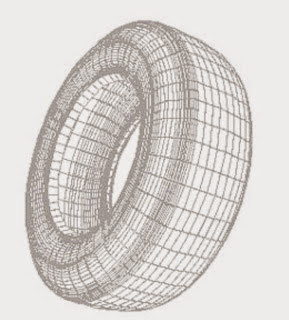Tuesday, December 16, 2014
GENESIS OF A GOOD CARTOON ARTIST
3 DIMENSIONAL GRAPHICS In every image whatever you intend to draw, there must be a sketch. This principle is also applied to that of the 3D Graphics artist too. Three-Dimensional Image, or 3-D image, flat image enhanced to impart the illusion of depth. Humans perceive the world and the objects in it in three dimensions¡ªbreadth, width, and depth. This seemingly simple phenomenon is the product of a complicated set of interactions between our eyes and our brains that is still not entirely understood. Our eyes are spaced about 6 cm (2.5 in) apart, which causes each eye to receive a slightly different image. The brain fuses these two images into a single 3-D image, enabling us to perceive depth. This way of seeing is called binocular vision, or stereoscopic vision. Flat images, such as illustrations, photographs, films, and graphics on a computer screen, can be manipulated with any of several techniques to create the illusion of depth. Such techniques make the objects in the images appear to pop out of the paper, film, or screen on which they appear. Once the realm of entertainment novelties, such as movies and comic books, 3-D images today have applications in medical technology, industrial design, and high-tech virtual training programs for surgeons, pilots, and astronauts. SIMPLE ILLUSTRATION OF HOW GRAPHICS IS PERFORMED They are basically just 3 steps to get this done without confusion, but you have to set your mind in achieving this, total concentration is very essential when designing pure graphics, let¡¯s make a Dunlop tire an example. The following are the steps involved 1 Wire Frame 2 Texture 3 Shading and reflection WIRE FRAME: The process of creating a realistic three-dimensional computer graphic is called rendering. First, the computer artist creates a wire frame model of the object¡ªin this case a rubber tire¡ªand specifies its size and orientation. In a wire frame, the surface of an object is represented as a series of polygons. Each point where lines meet on the surface of the object is called a vertex and is represented in the computer by its spatial coordinates. Since the straight edges of polygons do not create smooth surfaces, detailed models require an extremely large number of polygons to create an image that looks natural. TEXTURE: Next the computer artist adds layers of detail to the wire frame model, such as color and texture, to give it a more realistic appearance. Here, the artist has added color, tread pattern, lettering, and lines to suggest the tire¡¯s molded rubber rim. The computer calculates how each layer of detail should appear at every vertex on the surface of the model, and then applies the layer to the model's contours like wallpaper. SHADING AND REFLECTION: Finally, the artist specifies the source, direction, and intensity of the light shining on the object. The computer uses this data to calculate how each vertex on the surface of the object will be shaded and how the object¡¯s shadow will be cast in the background. The artist has also applied additional layers of texture to enhance the roughness of the tread and the smooth, reflective quality of the tire¡¯s inner surfaces. Don¡¯t get exhausted yet, you need to be focus to get things done this way, majority would continue asking how exactly we insert this effect to make such sunlight and every expression on the rubber wheels. You don¡¯t need to be an Artist just follow the basic steps. It takes little stress to design something like this once you know these basic steps.
Subscribe to:
Post Comments (Atom)













0 on: "GENESIS OF A GOOD CARTOON ARTIST"